 Weird Stuff
Weird Stuff  Weird Stuff
Weird Stuff  Our World
Our World 10 Ways Your Christmas Tree Is More Lit Than You Think
 Movies and TV
Movies and TV The 10 Coolest Stars to Set Sail on The Love Boat
 History
History 10 Things You Didn’t Know About the American National Anthem
 Technology
Technology Top 10 Everyday Tech Buzzwords That Hide a Darker Past
 Humans
Humans 10 Everyday Human Behaviors That Are Actually Survival Instincts
 Animals
Animals 10 Animals That Humiliated and Harmed Historical Leaders
 History
History 10 Most Influential Protests in Modern History
 Creepy
Creepy 10 More Representations of Death from Myth, Legend, and Folktale
 Technology
Technology 10 Scientific Breakthroughs of 2025 That’ll Change Everything
 Weird Stuff
Weird Stuff Ten Bizarre Facts About The Doge Meme
 Our World
Our World 10 Ways Your Christmas Tree Is More Lit Than You Think
 Movies and TV
Movies and TV The 10 Coolest Stars to Set Sail on The Love Boat
Who's Behind Listverse?

Jamie Frater
Head Editor
Jamie founded Listverse due to an insatiable desire to share fascinating, obscure, and bizarre facts. He has been a guest speaker on numerous national radio and television stations and is a five time published author.
More About Us History
History 10 Things You Didn’t Know About the American National Anthem
 Technology
Technology Top 10 Everyday Tech Buzzwords That Hide a Darker Past
 Humans
Humans 10 Everyday Human Behaviors That Are Actually Survival Instincts
 Animals
Animals 10 Animals That Humiliated and Harmed Historical Leaders
 History
History 10 Most Influential Protests in Modern History
 Creepy
Creepy 10 More Representations of Death from Myth, Legend, and Folktale
 Technology
Technology 10 Scientific Breakthroughs of 2025 That’ll Change Everything
10 Odd Cases of Food Poisoning
In 2011 a novel strain of Escherichia coli or E coli bacteria caused a serious outbreak of food borne illness focused mostly in northern Germany. It took months before authorities were able to track the source of the contamination to the seeds of fenugreek imported from Egypt and used in brussels sprout production. Almost 4,000 people became ill and 53 died. This is just one of the latest and most newsworthy cases of food poisoning to strike without warning, around the world. Here are ten more examples you may not have heard about.

Though it comprises just 0.2% of the United States population, the state of Alaska accounts for 50% of its food-related botulism poisoning. Most cases are related to the eating of native food dishes. Arctic explorers gave accounts of entire villages dying of botulism poisoning from eating contaminated meat. Prior to the 1960s when education programs taught Native Alaskans how to identify the early symptoms of botulism, so as to receive the antitoxin in time, the death rate for those who contracted the disease was more than 50%.
Most people today think of botulism as “Botox” injections used for cosmetic application for wrinkles. Droves of celebrities now have their faces permanently frozen by repeated injections of detoxified botulism. But botulism is an ancient and deadly food poison caused by the Clostridium botulinum bacteria. The bacteria creates a toxin in the body which can cause muscle paralysis, breathing difficulties, loss of sensation to the skin, respiratory failure, cardiac arrest, paralysis, and death.
In July 2002 two people from a Yup’ik village in western Alaska came across the remains of a beached beluga whale that appeared to have died in the spring. They cut the tail fluke into pieces, and put the pieces in sealable plastic bags. They then shared the whale meat with family and friends. Within days of eating the whale meat, a local physician reported three suspected cases of botulism poisoning. A total of eight Alaskan Natives were confirmed to have botulism and they were treated successfully with antitoxin, No one died.
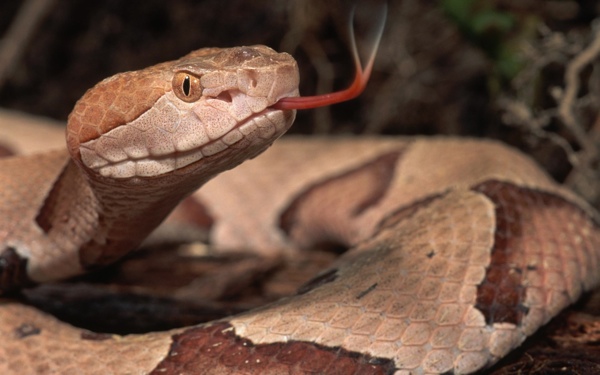
In one of the strangest cases of recent food poisoning, 13 people in China were hospitalized after eating snake. However, it was not the snake that (directly) caused them to become ill. It was what the snakes had eaten. The snakes had eaten frogs, which had been fed clenbuterol. All 13 people had eaten snake on September 1 and 2, 2010 at a local restaurant and had developed symptoms such as flushing, headache, chest tightness, palpitations, trembling, etc. These are common symptoms of clenbuterol poisoning. The cooking of the snake was not enough to rid it of residual clenbuterol that had built up from ingesting the contaminated frogs. Clenbuterol is approved for use as a bronchodilator for asthma patients and is also used by athletes as a performance-enhancing drug. Though it is prohibited, Clenbuterol can be added to animal feeds to obtain leaner meat. The frogs had been “juiced”, fed to the snakes, and the snakes poisoned the humans.
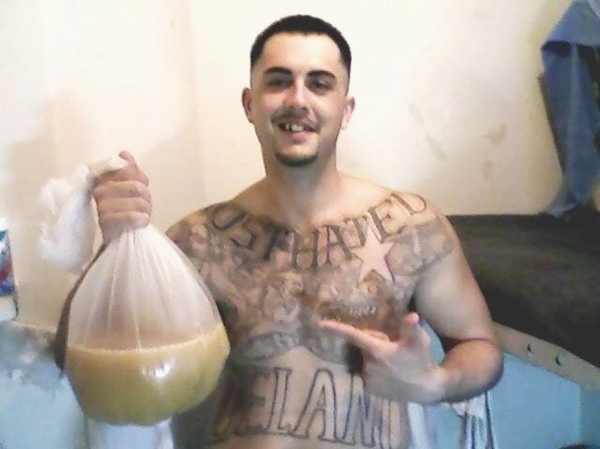
“Pruno” is prison lingo for “hooch” or any kind of homebrew made from whatever prisoners can lay their hands on. Some fruit, water, and sugar and “pruno!”, you have yourself a party! But sometimes you just can’t get any fruit, so if not, potatoes will do just fine. As in the case of a group of 2006 Utah prison inmates who laid their hands on weeks old baked potatoes for their pruno batch. Unfortunately for the prisoners, Clostridium botulinum bacteria which causes botulism, likes to live on the roots of potatoes. Eight prisoners developed botulism when they all drank the same pruno batch made from the potatoes. All developed classic symptoms of botulism poisoning—difficulty swallowing, vomiting, double vision and muscle weakness. Several had to be put on ventilators. One inmate who was spared took one sip of the pruno and spit it out it was so foul tasting.

Just two cyanide-contaminated grapes caused a nation wide “grape scare” in the United States in 1989. On March 2, 1989 an individual called the US Embassy in Santiago Chile and warned that some fruit being exported to the United States and Japan had been poisoned with cyanide. The terrorist claimed this was done to draw attention to the plight of the poor in his country. US officials took the threat seriously. Only seven years before, the United States had been rocked by the Tylenol scare when cyanide contaminated Tylenol led to the deaths of several people and all of the Tylenol in the country was recalled. The US FDA launched the most intensive food safety investigation in its history to determine if there was a threat to the American food supply.
Seasonal export of fruit is the second largest export industry in Chile. Thousands of tons of fruit are shipped from Chile and to ports around the world. Some of the grapes that arrived at the port in Philadelphia, PA appeared suspicious and were tested. Two grapes were found to contain a small level of cyanide. Based on these tests, the US FDA warned the public not to eat grapes and banned the import of fruit from Chile. This caused a “grape scare” in which Americans refused to buy or eat grapes. However, the FDA ban only lasted a few days and fruit from Chile was allowed to return to American ports and grocery stores. But in that time it is estimated Chile lost upwards of $330 million in exports. This caused a second crisis—this time a diplomatic one, when the government of Chile accused the United States of over reacting or even, deliberately tampering with the grapes.
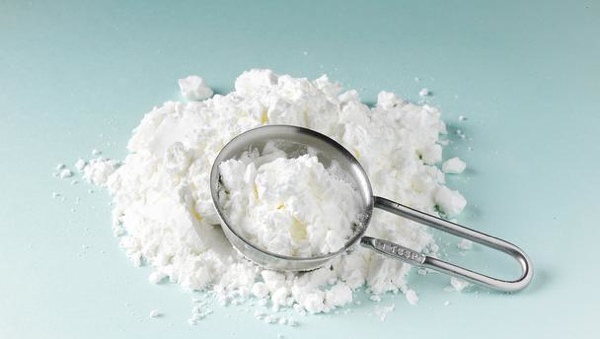
Food safety organizations and agencies around the world test for contamination and sometimes they find it before mass outbreaks of disease or illness occur. Once such case occurred in 2004 when the New Zealand Food Safety Authority (NZFSA) detected, during routine food testing, the contamination of egg custard with lead. The health authorities determined the lead was in a shipment of corn (maize) imported into the country and then made into about 100 tons of cornflour. The cornflour was thus contaminated with lead when it was used in the making of other products. Some of the contaminated cornflour was shipped to Australia and Fiji and New Zealand authorities notified these countries of the danger. Products made with the cornflour were recalled.
The NZFSA traced the lead contamination to specific ship, the MV Athena which, in 2003, had hauled lead concentrate between ports in Australia. It then went to China to pick up a shipment of maize and carried the maize in the same compartment as that used to hold the lead concentrate. Obviously, the ships crew never cleaned the compartment, thus the maize became cross contaminated with lead.
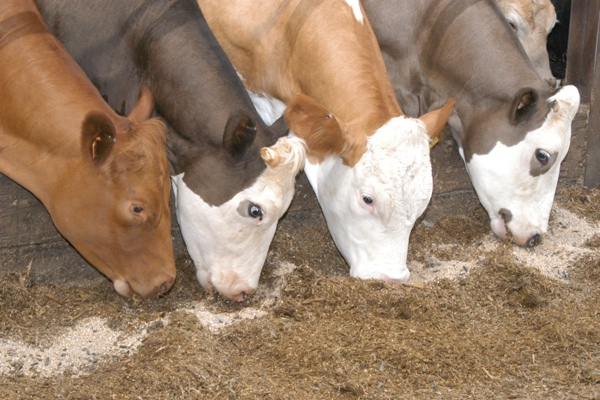
Polybrominated biphenyl (PBB), is an endocrine disruptor and suspected of being a human carcinogen. PBB’s are one of just six substances—along with lead and mercury—banned by the European Union’s Restriction of Hazardous Substances. They were also behind one of the largest agricultural disasters in the history of the United States. In 1973 this manmade chemical, used as a fire-retardant, was mistakenly put into cattle feed, sold, and fed to animals across the state of Michigan. Before the mistake was discovered thousands of cattle and other animals would be destroyed, farmers would march on the state capital and dump the carcasses of their dead cows on the capital steps, and thousands of people would eat the PBB-contaminated milk and meat.
It all began at a company called Michigan Chemical which made both the PBB (sold as a fire retardant under the trade name FireMaster), and magnesium oxide, a cattle feed supplement under the trade name NutriMaster (a great example of non-confusing product naming). Somehow by mistake, 10-20 of the fifty-pound bags of PBB made it to the Michigan Farm Bureau Services operation where it was added to the cattle feed instead of the NutriMaster. The PBB-contaminated feed went to farmers all around the state of Michigan. Quickly, after being fed the PBB-contaminated feed, the cows began to grow weak and their hides grew thick “like an elephant”. Veterinarians were puzzled and had no idea what was causing the outbreak of a mysterious disease in cattle all over the state. After nine months, the source of the contamination was identified, but not before 500 farms were quarantined and not allowed to sell milk and thousands of cows were destroyed along with 1.5 million chickens and thousands of pigs, sheep and rabbits.
Today, people who ate the contaminated food feel it is probably the source of elevated cancer rates they feel are taking place all around the state. All across the state, people who live near pits where the contaminated animals were buried fear their water is contaminated with the PBB leaching out of the pits.
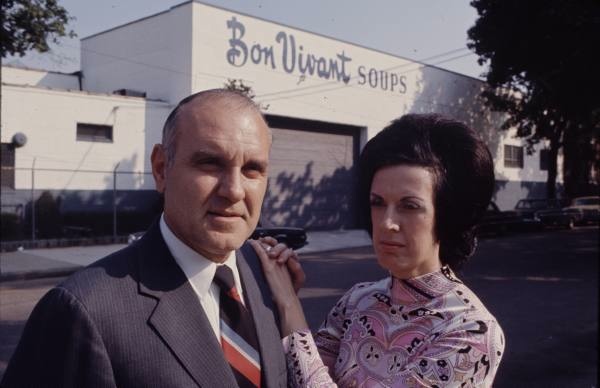
In the days before the widespread use of air-conditioning in homes, summer months were often times too hot for cooking of meals. On July 2, 1971, a couple in Westchester County, New York decided it was too hot so they went for a meal of Bon Vivant brand vichyssoise soup. Vichyssoise soup is often served cold and the couple ate the soup right out of the can. It tasted bad so they did not finish the soup, but it was already too late. The soup was contaminated with botulism. The man was dead within a day and the wife poisoned and paralyzed by the botulism toxin. The US Food and Drug Administration (FDA) issued a public warning and recalled all cans of the Bon Vivant vichyssoise soup, 5 more cans were found to contain the botulinum toxin. The FDA shut down the Bon Vivant plant and recalled all of their products. Because Bon Vivant also made generic “store brands” of soup as well as their own brand name products, people not only stopped buying Bon Vivant soup, they stopped buying any kind of soup at all. A full “soup-panic” was underway in the US. The incident destroyed consumer confidence in Bon Vivant and it soon went into bankruptcy.
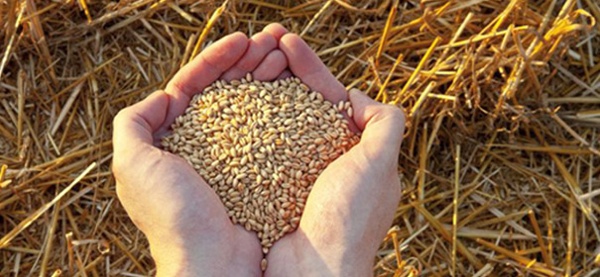
One of the largest public health crises and mass food poisoning events occurred in 1971 when seed grain, meant to be planted and used as seeds, was instead used as food. The seed grain had been treated with a fungicide, highly toxic methyl mercury.
The seed grain was shipped to Iraq late in the growing season of 1971 from suppliers in Mexico and the USA. The mercury-treated seed was dyed red as a warming not to eat it, but the Iraqi’s did not know this. In addition, the red dye would wash off, but not the mercury. The bags containing the seeds were labeled in Spanish and English the rural inhabitants of Iraq could not read. The Iraqi’s either did not understand or chose to ignore the skull and crossbones warnings on the bags. The confusion led some to believe it was food, and not seed.
Those who ate the seed suffered muscle paralysis, numbness, loss of vision, and other symptoms typical of mercury poisoning. People were exposed to the mercury when they used the seed in making bread, when they ground the seed and breathed in the dust, and when they fed the seed to animals and then ate the animals. People began to fall ill and die in late 1971 and into 1972. All total it is estimated that at least 650 died from eating or being exposed to the mercury-contaminated seed, but some believe the true number could be ten times that. An estimated 10,000 people suffered permanent brain damage from the mercury.
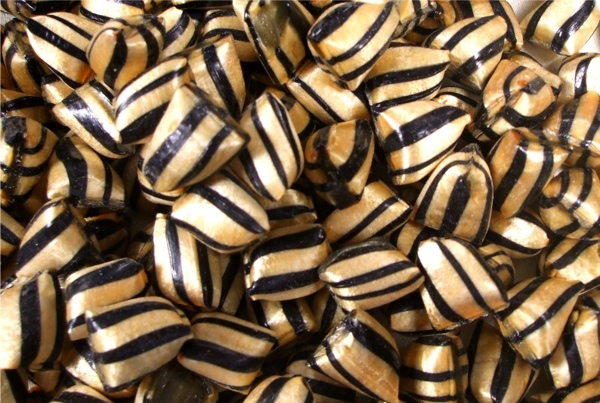
The story of how more than 200 people in 1858 Bradford England became poisoned by arsenic (20 would die) is an amazing one but which illustrates the need to protect the public with laws to regulate and punish the adulteration of food and drink.
William Hardaker better known as “Humbug Billy” sold sweets at the Green Market in Bradford. He purchased his sweets from Joseph Neal who made them himself. The sweets or “lozenges” were peppermint “humbugs” which were supposed to be made using peppermint oil, sugar, and gum. However, to save money, Neal and others who made sweets at that time would insert instead an inert material they called “daft” instead of the sugar. Daft could be almost anything, plaster of Paris, limestone, and all manner of appetizing replacements.
For this batch of lozenges, Neal sent a lodger by the name of James Archer to his druggist, a man by the name of Charles Hodgson, to collect his “daft”. Archer, not being familiar with the finer points of daft collection, by chance came to the druggist on a day when Mr. Hodgson was to ill to wait on him. So instead of the knowledgeable daft man—Hodgson, Archer met a daft-challenged replacement, a Mr. William Goddard. Unsure of where to locate the daft in the store, Goodard asked Hodgson who said it could be found in a cask in the corner of the store. Goddard found the cask and sold Archer 12 pounds of what he though was “daft” but what was in fact arsenic trioxide.
Archer returned to Neal with the arsenic trioxide who gave it to his experienced sweet maker James Appleton. Appleton mixed 12 pounds of arsenic trioxide with 40 pounds of sugar and made the lozenges. He thought the finished product looked odd and so did Humbug Billy who demanded a reduced price. Humbug Billy soon became ill himself from eating the arsenic lozenges, but not before he sold enough of them to make over 200 people sick and kill 20 of them. Authorities eventually traced the line of the dead and sick back to Humbug Billy and his sweet stand. After testing, the lozenges were found to have between 0.7 and 1 gram of arsenic (a half a gram is lethal).
The event contributed to the passage of the Pharmacy Act 1868 in the United Kingdom and legislation regulating the adulteration of foodstuffs.

What happened in Pont Saint-Esprit France on August 16, 1951? Over sixty years later, we still do not know the truth. What is known is that on that day over 250 residents of this small French village were overcome with hallucinations and madness, which resulted in 7 deaths and 50 people being sent to asylums. Authorities claimed it was a mass-poisoning event caused by a food borne illness, probably ergot poisoning of rye bread. Ergot is a type of psychedelic fungus (Claviceps purpurea) that can naturally occur in rye. Once eaten, the alkaloids produced by the fungus can cause hallucinogenic effects.
There is no doubt the people were experiencing severe hallucinations. Victims recalled feeling as though “serpents were coiling up my arms”, that “they were on fire”, and that they were “shrinking”. Some victims threw themselves out windows, others injured themselves by trying to claw and cut out insects they believed were inside their bodies. People were put into straightjackets and chained to beds.
The ergot poisoning explanation is one of several possible causes of this mass hallucinogenic event including exposure to mercury, nitrogen trichloride, or other fungi. However the explanation that may make the most sense is the town people were deliberately dosed with a hallucinogenic substance—LSD. In his fantastic book on the history of the secret LSD program operated by the CIA called “A Terrible Mistake”, author Hank Albarelli puts forth a convincing series of arguments, backed by declassified documents, suggesting the CIA was behind the Pont-Saint-Esprit event.
A CIA scientist named Frank Olson traveled to this little town not long before the event happened. Olson was one of the CIA scientists involved in “MKULTRA”, the secret LSD experiments conducted by CIA operatives and doctors, on unsuspecting victims. Some of the evidence Albarelli found included a document referencing Olson and Pont-Saint-Esprit which was ordered to be “buried” by David Belin. Belin was the executive director of the US government commission investigating CIA misdeeds in 1975. Another declassified report was of an interview with a representative of the Sandoz Chemical Company in Switzerland. In 1951, the Sandoz pharmaceutical plant was not only located a few hundred miles from Pont-Saint-Esprit, it was also the only laboratory in the world, at that time, manufacturing LSD. The Sandoz representative admitted, “The Pont-Saint-Esprit ‘secret’ is that it was not the bread at all… It was not grain ergot.”








